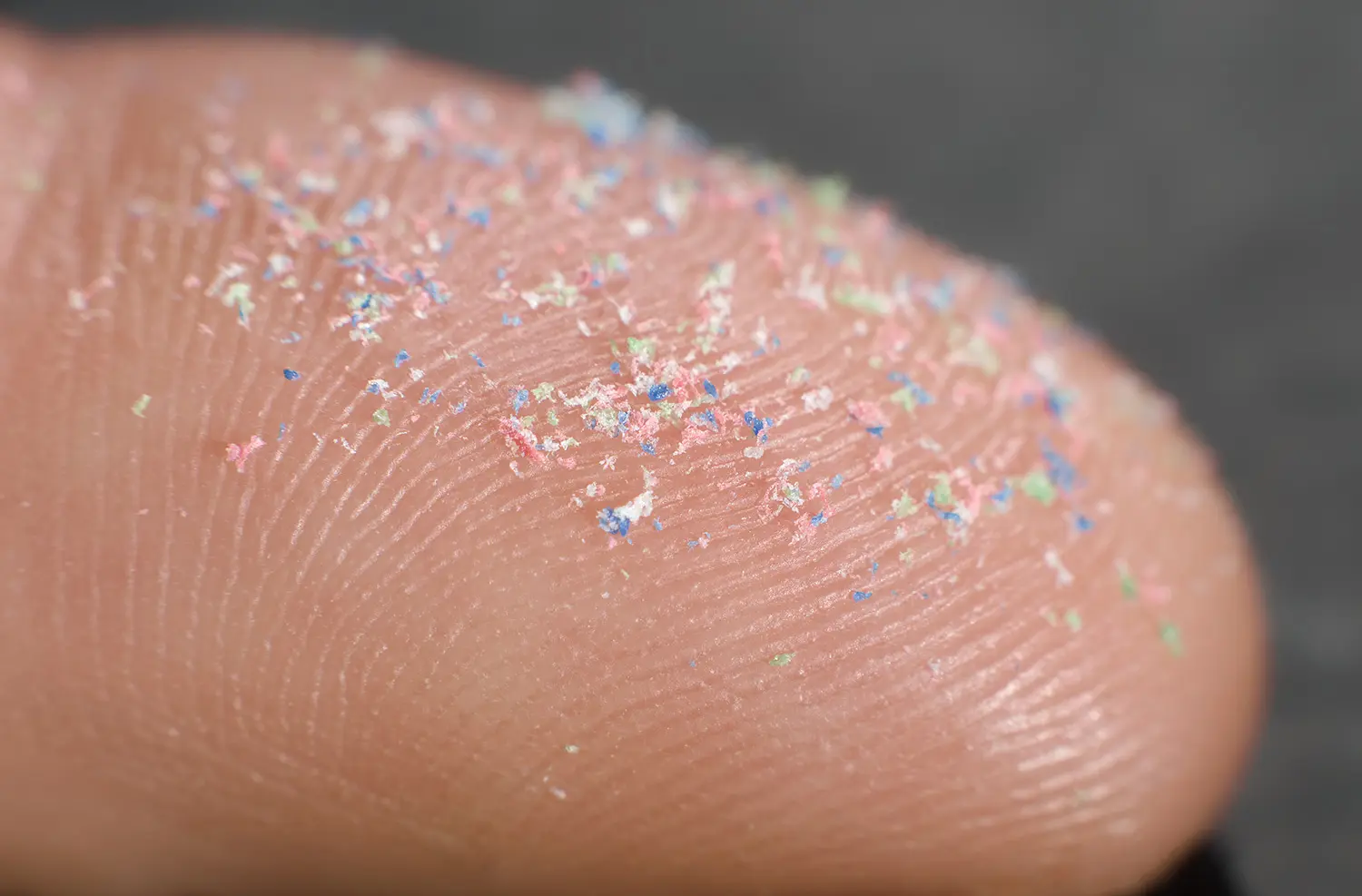
La industria petroquímica, ante la disminución en el uso de combustibles fósiles, ahora apuesta por los plásticos como medio para mantener sus ganancias. A través de narrativas engañosas, promueven la idea de que los plásticos son seguros y afirman que el reciclaje minimiza su impacto ambiental. Sin embargo, estas afirmaciones están lejos de la realidad. Los plásticos no solo están dañando el medio ambiente, sino que también tienen efectos perjudiciales en la salud humana, desde el cerebro hasta los órganos reproductivos.
Los microplásticos son pequeñas partículas de plástico de menos de 5 milímetros de tamaño. Se encuentran en todas partes: desde las zonas más profundas del océano hasta los alimentos que consumimos y el aire que respiramos. Aunque los plásticos se crearon inicialmente por su durabilidad, su degradación con el tiempo en microplásticos está generando una contaminación generalizada. Provienen de diversas fuentes, como botellas de plástico, productos cosméticos, fibras de ropa, desechos plásticos degradados e incluso neumáticos de automóviles. Hoy en día, estas diminutas partículas están invadiendo nuestros cuerpos, donde estudios han demostrado que causan una variedad de problemas de salud.
Los microplásticos pueden ingresar a nuestro cuerpo principalmente a través de la inhalación y la ingestión. Se encuentran en artículos cotidianos como envases de alimentos, cosméticos y botellas de agua. Una vez dentro, se han detectado en la sangre humana, los pulmones e incluso en el tejido cerebral. Recientemente, investigadores también descubrieron microplásticos en los órganos reproductivos masculinos, lo que genera preocupación sobre su posible relación con la disminución de las tasas de fertilidad.
La presencia de microplásticos en los tejidos humanos ha llevado a los científicos a investigar sus impactos en la salud. Estudios sugieren que los microplásticos pueden contribuir a la inflamación, alteraciones hormonales e incluso infertilidad. En un estudio, se encontraron microplásticos en la sangre de 17 de 22 adultos sanos. Otro estudio detectó microplásticos en el tejido cerebral de individuos fallecidos, lo que genera preocupación sobre riesgos cognitivos y neurológicos. Además, investigaciones recientes han vinculado los microplásticos con problemas reproductivos en hombres, encontrando que pueden causar disfunción eréctil al interferir con el flujo sanguíneo y la función muscular en el pene
El impulso de la industria petroquímica para el uso continuo de plásticos es un claro ejemplo de una Falsa Solución. Aunque promueven el reciclaje y alternativas de plástico como los "bioplásticos," la realidad es que estos esfuerzos son insuficientes para abordar la magnitud del problema. Las tasas de reciclaje siguen siendo bajas, y la producción y eliminación de los "bioplásticos" suele ser tan dañina como la de los plásticos tradicionales.
En lugar de depender de estas falsas soluciones, debemos impulsar Soluciones Mejores que prioricen la reducción del uso de plásticos en su totalidad. El Chequeo de Salud Planetaria, mencionado por líderes ambientales, enfatiza que se necesita un enfoque de “toda la Tierra.” Al abordar las causas fundamentales de la contaminación por plásticos—la sobreproducción y la dependencia de los combustibles fósiles—podemos proteger tanto la salud del planeta como la salud humana.
Para mitigar el daño causado por los microplásticos, debemos adoptar cambios sistémicos. Reducir el consumo de plásticos es fundamental. Esto incluye optar por alternativas a los productos de plástico, apoyar políticas que prohíban los plásticos dañinos y abogar por regulaciones ambientales más estrictas. Además, la investigación innovadora en materiales no tóxicos y Soluciones Mejores ayudará a reducir nuestra dependencia de los plásticos dañinos.
A medida que la ciencia se vuelve más clara, una cosa es evidente: los microplásticos representan una amenaza seria para la salud ambiental y humana. El momento de actuar es ahora, antes de que estas diminutas partículas causen un daño irreversible a nuestros cuerpos y a nuestro planeta.
10/09/2024 – Este artículo ha sido escrito por el equipo de FalseSolutions.Org
Referencias:
1. Branson, R. “The Planetary Health Check.” Virgin Blog. October 2024. (https://www.virgin.com/branson-family/richard-branson-blog/the-planetary-health-check)
2. Pinto-Rodrigues, A. “Microplastics are in our bodies. Here’s why we don’t know the health risks.” Science News. March 24, 2023. (https://www.sciencenews.org/article/microplastics-human-bodies-health-risks)
3. Dutta, S. “Study links higher microplastic levels in urine to endometriosis risk.” News Medical. May 21, 2024. (https://www.news-medical.net/news/20240521/Study-links-higher-microplastic-levels-in-urine-to-endometriosis-risk.aspx)
4. Mundell, E. “Breathing Could Bring Microplastics Into the Human Brain, Study Shows.” HealthDay. September 16, 2024. (https://www.healthday.com/health-news/neurology/916-11am-breathing-could-bring-microplastics-into-the-human-brain-study-shows)
5. Carrington, D. “Microplastic discovery in penises raises erectile dysfunction questions.” The Guardian. June 19, 2024. (https://www.theguardian.com/environment/article/2024/jun/19/microplastic-discovery-in-penises-raises-erectile-dysfunction-questions)